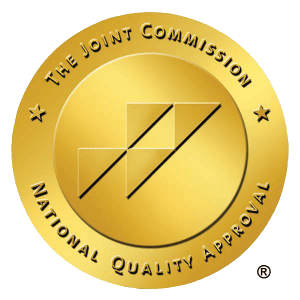Anxiety disorders are among the most common mental health conditions, affecting millions worldwide. They are characterized by excessive, persistent worry and fear about everyday situations.
In the United States, among its 130 million adult population, approximately 34% experience a mental health condition or disorder, with anxiety and depression being the predominant issues.1
The American Psychiatric Association’s Diagnostic and Statistical Manual of Mental Disorders, Fifth Edition (DSM-5), categorizes seven primary types of anxiety disorders, each with unique features and impacts on individuals. In this guide, we’ll explore all of them.
😟
What’s the most common anxiety disorder?The most common anxiety disorder is Generalized Anxiety Disorder (GAD), characterized by persistent, excessive worry about everyday activities and events.
🔑 Key takeaways
Diversity of Anxiety Disorders: There are several types of anxiety disorders, including Generalized Anxiety Disorder (GAD), Panic Disorder, Specific Phobia, and Social Anxiety Disorder, each with its unique symptoms and challenges.
Significance of Diagnosis: Accurate diagnosis based on DSM-5 criteria is crucial for effective treatment. Understanding the specific type of anxiety disorder is essential for tailored treatment plans.
Impact on Daily Life: Anxiety disorders can significantly impact an individual’s daily life, affecting their social interactions, work performance, and overall quality of life.
Treatability: Anxiety disorders are highly treatable. Various treatments, such as Cognitive-Behavioral Therapy (CBT), medication, lifestyle changes, and new therapeutic advancements, offer effective ways to manage and reduce symptoms.
Importance of Professional Help: Seeking professional help, such as the services provided by anxiety treatment centers. Specialized care and support can lead to better outcomes and improved quality of life.
Generalized Anxiety Disorder (GAD)
Generalized Anxiety Disorder (GAD) is a mental health condition marked by chronic, exaggerated worry and tension. This worry is often about everyday matters and is disproportionate to the actual likelihood or impact of the event. People with GAD find it challenging to control their anxiety and often expect the worst, even when there is no apparent reason for concern.
signs of Generalized Anxiety Disorder
- Persistent Worrying: Constant overthinking about everyday issues.
- Physical Symptoms: Includes muscle tension, fatigue, and sleep problems.
- Emotional Distress: Feelings of restlessness, irritability, and difficulty concentrating.
- Social Impact: Struggles in relationships and social interactions due to overwhelming anxiety.
- Work-Related Issues: Difficulty in maintaining focus and productivity at work.
DSM-5 Diagnostic Criteria: Key Criteria for Diagnosing GAD
- Excessive anxiety and worry about a variety of topics, events, or activities. This worry occurs more days than not, for at least six months.
- The individual finds it hard to control the worry.
- The anxiety and worry are associated with three (or more) of the following symptoms: Restlessness, fatigue, difficulty concentrating, irritability, muscle tension, or sleep disturbance.
- The anxiety, worry, or physical symptoms cause clinically significant distress or impairment in social, occupational, or other important areas of functioning.
- The disturbance is not attributable to the physiological effects of a substance or another medical condition.
- Another mental disorder does not better explain the disturbance.
🧬
Are Anxiety Disorders Genetic? Yes, research suggests a genetic component to anxiety disorders. While environment and life experiences play a significant role, individuals with a family history of anxiety disorders are at a higher risk of developing them.
Effective Treatments for GAD
- Cognitive-Behavioral Therapy (CBT): Helps in altering negative thought patterns.
- Medication: Includes antidepressants and anti-anxiety drugs.
- Lifestyle Adjustments: Regular exercise, healthy diet, and sufficient sleep can help reduce symptoms.
- Relaxation Techniques: Practices like mindfulness, meditation, and yoga.
- Support Groups: Sharing experiences and strategies with others facing similar challenges.
Panic Disorder
Panic Disorder is characterized by sudden and repeated episodes of intense fear or panic attacks, which often strike unexpectedly and without warning.
These episodes are usually accompanied by physical symptoms such as heart palpitations, chest pain, shortness of breath, dizziness, or abdominal distress.
People with Panic Disorder live in fear of having panic attacks and may avoid places or situations where previous attacks have occurred.
Signs of a Panic Disorder
- Frequent Panic Attacks:Unexpected, intense episodes of fear.
- Physical Symptoms: Including heart palpitations, trembling, and dizziness.
- Avoidance Behavior: Avoiding places or situations due to fear of a panic attack.
- Persistent Worry: Constant concern about when the next attack will occur.
- Impact on Daily Life: Interference with work, social activities, and relationships.
Key Panic Disorder DSM-5 Diagnostic Criteria
According to the DSM-5, Panic Disorder is diagnosed based on the following criteria:
- Recurrent, unexpected panic attacks: A panic attack is an abrupt surge of intense fear or discomfort reaching a peak within minutes.
- At least one of the attacks has been followed by one month (or more) of one or both of the following.
- Persistent concern or worry about additional panic attacks or their consequences.
- A significant maladaptive change in behavior related to the attacks.
- The disturbance is not attributable to the physiological effects of a substance or another medical condition.
- The disturbance is not better explained by another mental disorder.
Treatment for Panic Disorders
Panic Disorder is a debilitating mental health condition that can significantly impact an individual’s quality of life. Characterized by unexpected and recurring panic attacks, this disorder often leads to a constant fear of future attacks, causing individuals to avoid certain situations or places. Fortunately, there are several effective treatment options available for those struggling with Panic Disorder. In this section, we will explore the various approaches used to manage and treat this condition, offering hope and support to those affected by it. Treatment for Panic Disorder can be very effective and typically includes:
- Cognitive-Behavioral Therapy (CBT): Helps change the thought patterns that trigger panic attacks.1
- Medication: Antidepressants and benzodiazepines can be used to control symptoms.
- Relaxation Techniques: Breathing exercises and mindfulness can help manage symptoms during a panic attack.
- Lifestyle Changes: Regular exercise and avoiding caffeine and alcohol can help reduce the frequency of panic attacks.
- Education: Understanding Panic Disorder can help individuals recognize and manage symptoms more effectively.
Panic Disorder, though challenging, can be managed effectively with the right treatment and support. Recognizing the signs and seeking timely help can make a significant difference in coping with this disorder.
Specific Phobias
Signs of Having a Specific Phobia
- Intense Fear and Anxiety: Excessive fear of a specific object or situation.
- Avoidance: Going out of the way to avoid the feared object or situation.
- Physical Symptoms: Can include sweating, trembling, heart palpitations, and nausea when exposed to the phobia.
- Impact on Daily Life:Limitations on work, social interactions, and personal activities.
- Emotional Distress: Feelings of helplessness and embarrassment about the fear.
DSM-5 Criteria for Specific Phobias
- Marked fear or anxiety about a specific object or situation (e.g., flying, heights, animals, receiving an injection, seeing blood).
- The phobic object or situation almost always provokes immediate fear or anxiety.
- The phobic object or situation is actively avoided or endured with intense fear or anxiety.
- The fear or anxiety is out of proportion to the actual danger posed by the specific object or situation and to the sociocultural context.
- The fear, anxiety, or avoidance is persistent, typically lasting for 6 months or more.
- The fear, anxiety, or avoidance causes clinically significant distress or impairment in social, occupational, or other important areas of functioning.
- Another mental disorder does not better explain the disturbance.
Treatment for Specific Phobias
- Exposure Therapy: Gradually exposing the person to the feared object or situation in a controlled setting to reduce fear.
- Cognitive-Behavioral Therapy (CBT): Helps in changing the thought patterns and behaviors associated with the phobia.
- Virtual Reality (VR): Emerging as a tool for safe and controlled exposure therapy.
- Pharmacotherapy: While not a first-line treatment, medications can be used in conjunction with therapy to manage symptoms.
- Mindfulness and Relaxation Techniques: Aiding in managing anxiety and stress related to the phobia.
Social Anxiety Disorder
Social Anxiety Disorder, also known as Social Phobia, is a chronic mental health condition characterized by an intense, persistent fear of being watched and judged by others. This fear can affect work, school, and other day-to-day activities. It can even make it hard to make and keep friends.
People with Social Anxiety Disorder often feel overly anxious in social situations and are overly concerned about being embarrassed, humiliated, rejected, or looked down on in social interactions.
Signs of social Anxiety
- Intense Fear in Social Settings: Worrying excessively about social interactions.
- Avoidance of Social Situations: Leading to isolation and loneliness.
- Physical Symptoms: Such as blushing, sweating, trembling, or nausea in social situations.
- Low Self-Esteem: Often feeling embarrassed, inferior, or ashamed.
- Impact on Relationships and Work: Difficulty in forming relationships and performing in work or school environments.
DSM-5 Criteria for Social Anxiety
- Marked fear or anxiety about one or more social situations in which the individual is exposed to possible scrutiny by others.
- The individual fears that they will act in a way or show anxiety symptoms that will be negatively evaluated.
- The social situations almost always provoke fear or anxiety.
- The social situations are avoided or endured with intense fear or anxiety.
- The fear or anxiety is out of proportion to the actual threat posed by the social situation and to the sociocultural context.
- The fear, anxiety, or avoidance is persistent, typically lasting for 6 months or more.
- The fear, anxiety, or avoidance causes clinically significant distress or impairment in important areas of functioning.
- The fear, anxiety, or avoidance is not attributable to the physiological effects of a substance or another medical condition.
Treatment for Social Anxiety
- Tailored Cognitive-Behavioral Therapy (CBT): Addressing specific aspects of social anxiety and modifying negative thought patterns.3
- Exposure Therapy: Incremental exposure to feared social situations to reduce anxiety over time.
- Mindfulness-Based Therapies: Helping individuals to focus on the present moment and reduce rumination.
- Acceptance and Commitment Therapy (ACT): Encourages acceptance of anxious feelings and commitment to personal values.
- Pharmacotherapy: Medications such as SSRIs are often used alongside therapy to manage symptoms.
- Online Therapy and Digital Tools: Increasing accessibility and providing additional resources for managing symptoms.
Get Treatment for Anxiety Disorder
Each type of anxiety disorder presents unique challenges and requires specialized approaches for effective management and treatment. It’s important to remember that these disorders are highly treatable, and individuals can lead fulfilling lives with the right support and interventions.
For those seeking comprehensive care, Cornerstone Healing Center offers residential treatment for anxiety.
Located in both Scottsdale and Phoenix, Arizona, our professionals provide a supportive environment where individuals can access a range of therapies and treatments under professional guidance.
This facility is dedicated to helping individuals understand their anxiety, develop coping strategies, and ultimately embark on a journey towards healing and wellbeing.









